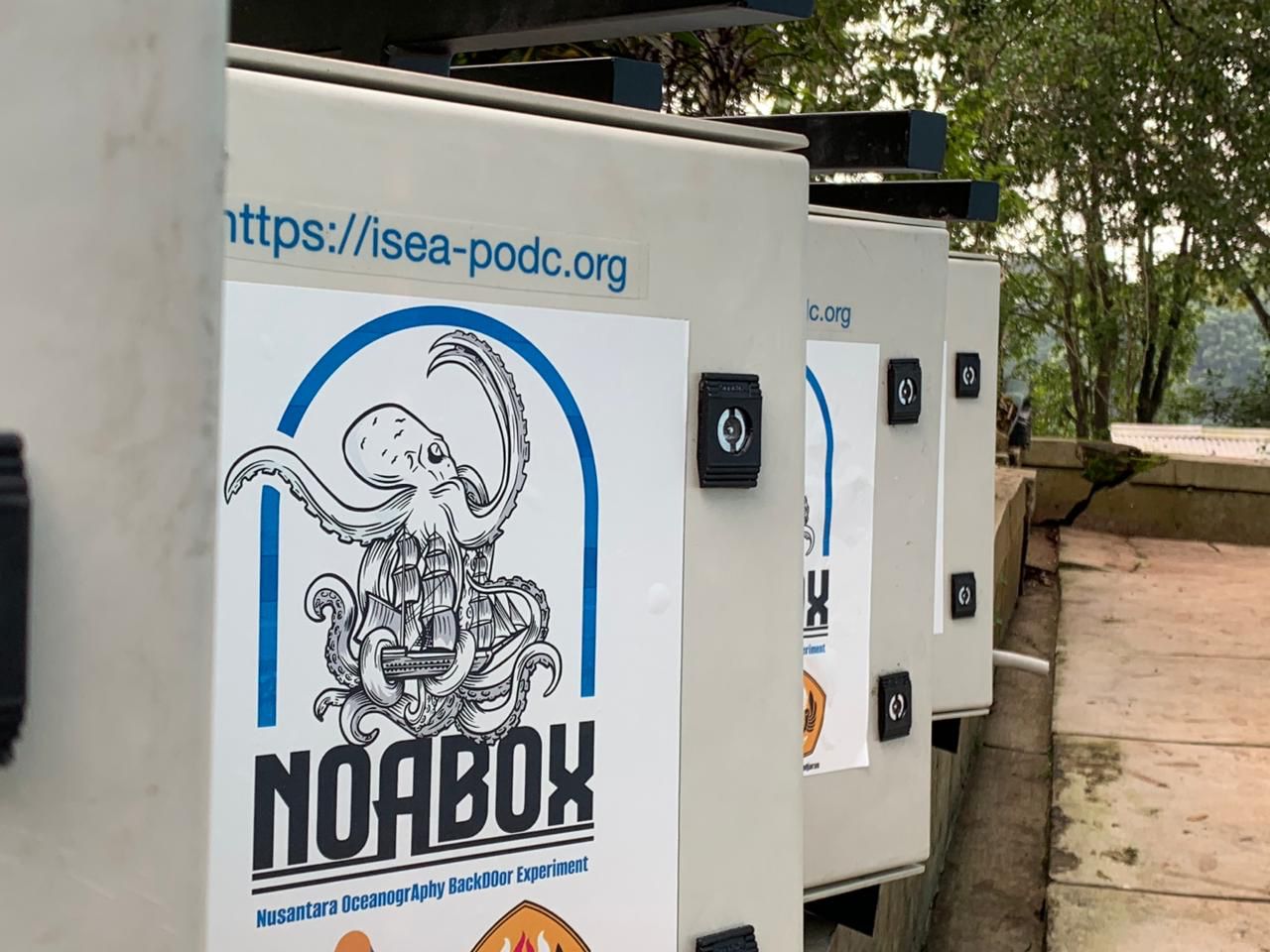Monitoring ocean conditions is of utmost importance and has recently emerged as a significant concern in the global scientific community. Indonesia, being an archipelagic nation situated along the equator, boasts intricate and distinctive sea characteristics shaped by factors like monsoon patterns, bathymetry, and the complex interplay between the Indian Ocean and the Pacific Ocean.
Consequently, the NOABOX Instrument, a pioneering monitoring device, has been developed by integrating IoT (Internet of Things) technology and the low-cost instrumentation concept. This innovative instrument is designed to provide a cost-effective solution, offering a budget-friendly alternative for precise measurements. The primary objectives of this project include creating a compact, easily deployable instrument for various ships, minimizing costs, ensuring high precision, and requiring minimal human resources for operation. The prototype has a compact, portable design, serving as a versatile survey platform capable of delivering high-quality data for marine operations. To meet these requirements, the design focuses on reducing the vessel’s size to allow for mobilization and deployment by just one or two personnel, cost-effectiveness, efficient battery capacity with a five-year mission duration.
In essence, NOABOX was engineered to measure multiple parameters in real-time and near-time, including sea-atmosphere temperature, salinity, dissolved oxygen, total dissolved solids (TDS), and pH. These parameters collectively offer invaluable insights into the state of marine environments, enabling researchers to delve into topics such as climate change, ocean circulation, water quality, ecosystem health, and the impact of human activities on the world’s oceans.
The fundamental concept behind the low-cost NOABOX is to combine various probes connected to a microcontroller, making it adaptable for use on different vessels. Within this compact instrument, several probes, including seawater temperature, air temperature, pH, salinity, TDS, and dissolved oxygen, are integrated. A pump system has been incorporated to facilitate the collection of seawater samples for measurement. The instrument’s dimensions resemble that of a box, measuring 30 x 40 x 20 cm and weighing approximately 15 kg when all components are assembled within the housing. Measurement data is stored on a micro-SD card, which can be easily transferred to a designated server using the Mobile Communications (GSM) system. The instrument has undergone improvements in terms of the number of measured parameters, instrument dimensions, system operation, and data accuracy.
NOABOX has undergone rigorous testing in various environments, including freshwater ponds, laboratories, and the sea on the East Coast of Pananjung Village, Pangandaraan District, West Java. Testing in freshwater ponds assessed the instrument’s functionality and performance.
In general, based on field testing, the accuracy of the data generated by NOABOX is commendable. It presents itself as a viable option for government agencies, academic institutions, non-governmental organizations (NGOs), consultants, and other entities seeking an affordable ocean observation instrument with high-quality data and user-friendly operation. NOABOX can be utilized for the protection of Marine Conservation Areas (KKL), supporting forecasting efforts, aiding modeling projects, and contributing to policymaking by government authorities.



